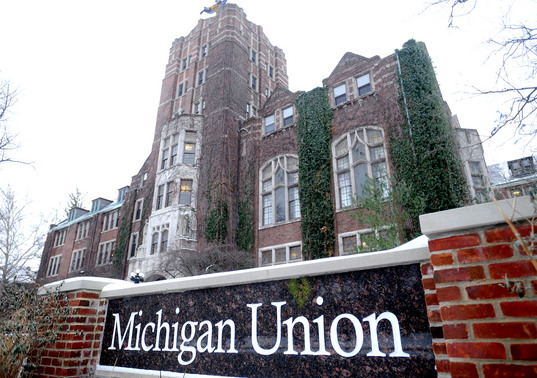University of Michigan campus in Ann Arbor spans 3,000 acres of classrooms, museums, hospitals

Angela Cesere | AnnArbor.com
With its nearly 42,000 students, 38,900 employees, its own public safety department, museums, a world-class hospital, nature reserves and a $5 billion budget, the University of Michigan is a city unto itself.
Campus spans more than 3,000 acres and is home to big-name cultural attractions as well as spaces for quiet reflection. It bustles with students from September through April and shifts to a quieter persona in the summer when the students are gone.
The U-M, fondly known as the Harvard of the Midwest, is regularly ranked as one of the top universities in the nation by U.S. News and World Report: fourth of all public universities, ninth for its law school, 11th for its medical school and 13th for its business school.
Campus is divided into five main sections: central campus, east campus, north campus, south campus and the Medical Center. It has 483 major buildings, and its libraries hold 8.2 million volumes. While North Campus is geographically larger, Central Campus defines the university — especially with The Diag, a pedestrian crossroad that serves as the site for everything from demonstrations to sunbathing, at its center.
Like any city worth its weight, the U-M campus brims with history but also marches forward. There are other museums, large and small, including the Exhibit Museum of Natural History, which can serve as a young child’s first introduction to campus with its towering dinosaurs and glittering gemstones.
Detroit architect Albert Kahn left a giant footprint on campus, including designing classically and neo-classically-styled Hill Auditorium, completed in 1913, and Angell Hall, with its Beaux-Arts design, opened in 1924.
Public art dots campus, including the Father Triton water sculpture at Ingalls Mall and the iconic Cube that sits magically on its axis just north of the Michigan Union. The Union itself claims its own page in history: It was on its front steps that then-Senator John F. Kennedy first made reference to a program of foreign service that eventually became the Peace Corps.
The Power Center and Hill Auditorium help make mid-size Ann Arbor feel like a big city, attracting international talent usually reserved for the stages of New York and San Francisco: James Galway, Itzhak Perlman, Wynton Marsalis and Garrison Keillor have appeared on their stages. Rackham Auditorium, while still grand, offers a cozier venue.
And there’s a less high-brow form of art on campus - call it the people’s art - in the form of The Rock, a giant boulder at the intersection of Washtenaw Avenue and Hill Street. It’s been covered with thousands of coats of paint, announcing whatever is happening at the moment, from birthdays to political messages.
Come summer, town and gown mingle with the Ann Arbor Summer Festival held on the university’s Ingalls Mall, in the shadow of the Burton Memorial Tower with its carillon.
There are places of calm among the campus chaos, such as the courtyard of the Law Quadrangle (or Law Quad), a place for quiet reflection and an uncounted number of weddings. The 123-acre Nichols Arboretum, best known simply as the Arb, also offers quiet sanctuary, with its hilly terrain, native plants, a half-mile line of daffodils and 234 varieties of peonies that burst open for a few short days in June.
Editor's Note: This biography was last updated in February 2010.
Janet Miller has been covering the Ann Arbor area as a journalist since the mid-1980s, first as a freelancer for the Ann Arbor News then as a part-time staff reporter. It was here that she won a Michigan Press Association first-place award for investigative reporting and a third-place MPA award for breaking news reporting. She spent much of her time at the News covering K-12 and higher education. After leaving the News a few years ago, she began freelancing for the Ann Arbor Business Review. She began freelancing for AnnArbor.com when it launched last summer. She has lived in the Ann Arbor community for more than 25 years and volunteers in the areas of literacy and youth.
Contact the Community Team at community@annarbor.com.

